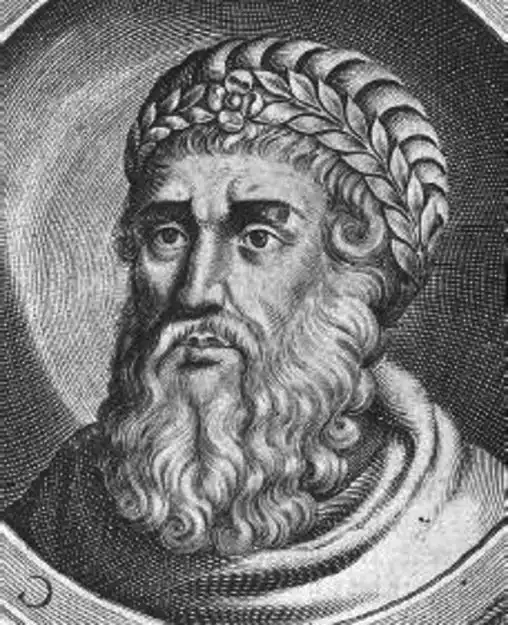
Herod’s Rise to Power
Herod was born around 74 BCE to a distinguished family in Idumea, south of Judea. His father Antipater gained power by supporting Hyrcanus II in the Hasmonean civil war against his brother Aristobulus II. This earned Antipater governorship of Judea under the Romans.
Herod inherited his father’s political prowess. He married well, forging an alliance with the Hasmoneans through his wife Mariamne. In 40 BCE, the Parthians invaded Judea, capturing Jerusalem and installing Antigonus as king. Herod fled to Rome, where the Senate proclaimed him “King of the Jews.”
With Roman military support, Herod returned to Judea in 39 BCE to wage war against Antigonus. After 3 years of fighting, Herod captured Jerusalem and had Antigonus executed.
Herod ruled Judea until his death in 4 BCE. His reign was marked by both development projects and ruthless suppression of opponents. He expanded the Second Temple in Jerusalem into an architectural marvel, as well as building the port cities Caesarea Maritima and Anthedon.
Yet Herod was deeply paranoid, putting to death anyone he perceived as a threat, including his wife Mariamne and three of his own sons. When Jesus was born, Herod allegedly ordered the Massacre of the Innocents in Bethlehem, fearing the prophecy of a “King of the Jews” who would replace him.
Herod positioned himself as an indispensable ally of Rome. But to many Jews, he was a Roman puppet, violating Jewish customs and traditions to appease his imperial patrons. Resentment simmered among the populace throughout his reign.
Herod’s Building Projects
Herod embarked on ambitious construction projects across Judea, seeking to curry favor with his subjects and leave a lasting legacy. His most renowned undertaking was a massive expansion and renovation of the Second Temple in Jerusalem.
The Temple Mount was enlarged to double its original size. A 35-acre plaza surrounded the sacred grounds, requiring the building of huge retaining walls. The Temple itself was fully reconstructed in magnificent fashion, with a golden façade and elaborate marble colonnades. The sacred inner sanctum, the Holy of Holies, was also enlarged.
According to the Jewish historian Josephus, over 10,000 skilled workmen labored on the Temple complex. The renovations likely began in 20 BCE and continued well into Herod’s reign, only fully completed decades later in 63 CE. For devout Jews, the glorious new Temple was a source of immense pride.
Beyond Jerusalem, Herod also sponsored major civic works. On the coast of Judea, he built an artificial harbor and a brand new city named Caesarea Maritima, complete with a palace, amphitheater, hippodrome for chariot races, and elaborate baths. The seaside metropolis was a testament to the benefits of Herod’s allegiance to Rome.
In the Decapolis region east of Galilee, Herod reconstructed the city of Anthedon, renaming it Agrippias in honor of his patron Marcus Vipsanius Agrippa. Architectural and infrastructural projects like these cemented Herod’s reputation as a capable ruler devoted to Judean development.
Herod’s Paranoia and Cruelty
For all his accomplishments, Herod possessed a darkly paranoid personality. Obsessed with holding onto power, he responded with swift violence against any perceived threats. Herod put to death his wife Mariamne, her two sons, his mother-in-law Alexandra, and his eldest son Antipater.
Even within his own family, no one was safe from Herod’s wrath. According to the Gospel of Matthew, when Herod heard prophecies of a coming “King of the Jews,” he ordered the execution of all male infants in Bethlehem to eliminate the threat. This infamous Massacre of the Innocents demonstrated the depths of Herod’s insecurity and ruthlessness.
Beyond his family, Herod had thousands executed during his reign, including many Jewish elites and religious leaders. He sponsored lavish pagan temples in Judea, violating Jewish customs to please the Romans. Herod also imposed heavy taxes to fund his massive building projects, fostering economic hardship and resentment.
By the end of his life, the populace widely despised their tyrannical king. Yet Herod remained in power through a potent mix of political cunning, brutal intimidation, and the staunch support of Roman emperors. He left behind a far-reaching legacy, for better or worse. Judea prospered materially under his reign, but at the cost of terrible oppression for any who dared oppose Herod’s iron-fisted rule.
Herod the Great was a complex monarch who ruled Judea for over 30 years. His extensive building programs and promotion of Hellenic culture earned him the title “King of the Jews” from Rome. Yet he was also deeply paranoid, murdering opponents and even his own family members to maintain control. Herod left behind a conflicted legacy – an effective king but also a merciless tyrant.
References
Josephus, F. (75 AD). The Antiquities of the Jews. Thomas Nelson Inc.
Grant, M. (1971). Herod the Great. American Heritage Press.
Gelb, N. (2013). Herod the Great: Statesman, Visionary, Tyrant. Rowman & Littlefield Publishers.
